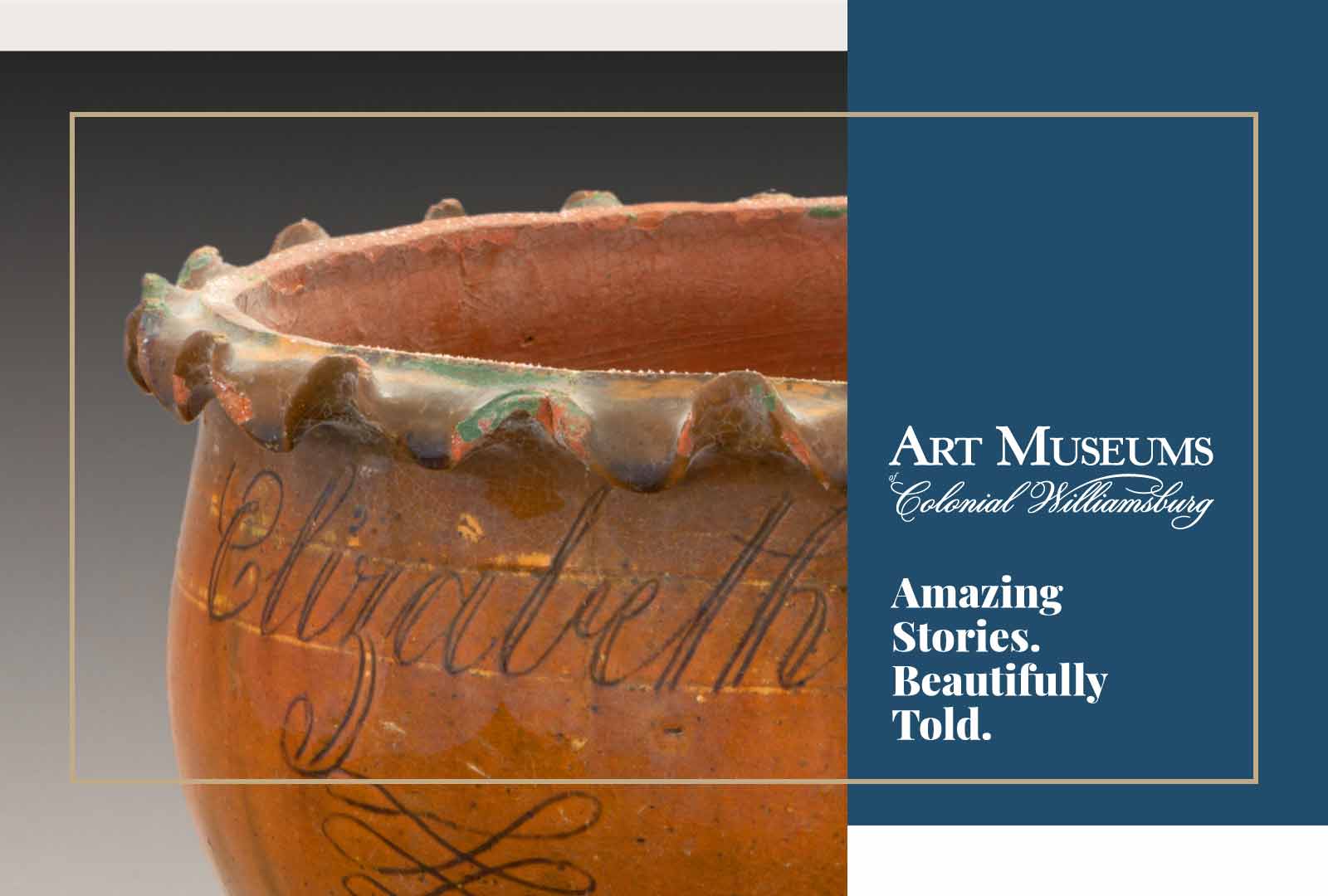



Today we’re featuring a flowerpot, which you can see in the exhibition “American Folk Pottery: Art and Tradition,” currently on view in the Abby Aldrich Rockefeller Folk Art Museum, one of the newly expanded and updated Art Museums of Colonial Williamsburg and home to the nation’s premier collection of American folk art.
At a little over nine inches tall, this flowerpot with its ruffled edge is made of red earthenware covered with a lead glaze that not only gave it a decorative sheen, but also enabled it to retain water. The body of the piece is encircled with an incised inscription reading: "Elizabeth Canby / Brandywine 11th MO 21st 1825." The base is pierced with a drainage hole, similar to those found on modern flowerpots.
The next time you water the potted plant on your deck or the houseplant on your kitchen windowsill, think about the container it’s placed in. Would you ever consider saving it for your kids or grandkids to pass down from generation to generation? Well, Elizabeth Roberts Canby, the original owner of this flowerpot, actually did just that.
No doubt, this flowerpot with its distinctive ruffled edge was a special object to Elizabeth Roberts Canby and her family. In addition to the name “Elizabeth Canby,” the inscription around the back of the pot reads “Brandywine 11th MO 21st 1825.” James Canby married Elizabeth Roberts in 1803 and Brandywine was the name of their Wilmington, Delaware home. The 1825 date on the object likely documents when Chester County, Pennsylvania potter Enos Smedley made it.
Enos Smedley and the Pennsylvania potters from whom he learned his trade worked exclusively in red earthenware, producing utilitarian pieces including “fancy flowerpots” such as this example. The fancy flowerpots included rims with as many as three rows of crimped ruffles and saucers with a corresponding number of ruffles. Additionally, the pots usually were decorated with dates and places written in elegant script between guidelines that were incised when the pot was turned on the wheel. Although a small part of production, these flowerpots were a distinctive part of the Chester County, Pennsylvania potters’ output. Differing in form and decoration from Pennsylvania-German pottery, these vessels preserve an English pottery tradition brought from Staffordshire to southeastern Pennsylvania at the turn of the 18th century.
Originally, this pot probably had a separate saucer with a ruffled edge similar to that seen on the upper rim of this piece.
Elizabeth Roberts Canby was the daughter of Quaker Philadelphia residents Robert Roberts and Catherine Deshler Roberts. We may never know what plant or flowers Elizabeth grew in this pot, but the object was clearly prized among her possessions. She gave the flowerpot to her daughter Elizabeth M. Canby Rumford and it continued to pass down through several generations of descendants until its care was entrusted to Colonial Williamsburg by a family member in the early 1980s.
It is extremely rare for a utilitarian object to retain a detailed history of ownership, not to mention a strong attribution to a specific potter. With so many layers to the stories it tells, the flowerpot remains a significant object in Colonial Williamsburg’s collection of ceramics.
You can find the Canby flowerpot here and tens of thousands of other objects in the online collection here. We also invite you to see this remarkable object in person at the Art Museums of Colonial Williamsburg and discover more amazing stories, beautifully told.
Angelika Kuettner has worked at Colonial Williamsburg for about 12 years. She enjoys studying ceramics of all types and their interplay with other 18th- and 19th-century every-day objects found on the dining table, in the chamber, or even in the garden.

